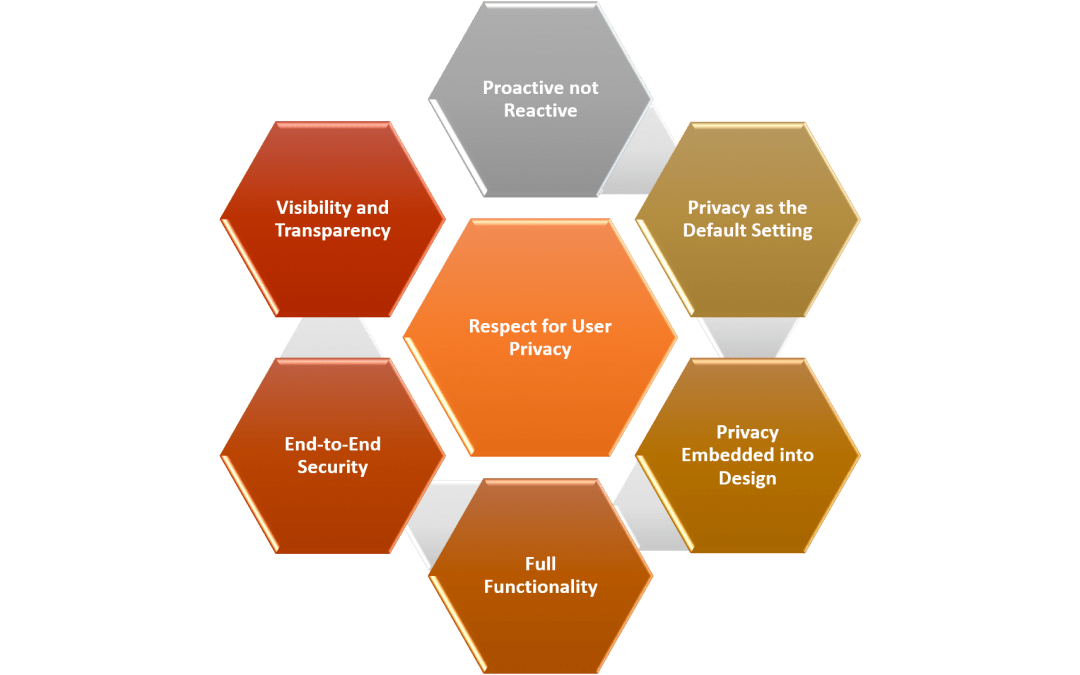Privacy by Design is a proactive framework that embeds privacy into the design, developement and operations of systems and products. Due lots of Data privacy regulation like GDPR, HIPPA etc we always think privacy of our customer as our first pripority. Lets learn what is Privacy by Design framwork and how we think when we design, develop and test the software applications for our clients.
Privacy by Design (PbD)
The Privacy by Design (PbD) framework is characterized by the taking of proactive rather than reactive measures. It anticipates the risks and prevents privacy invasive events before they occur. PbD does not wait for privacy risks to materialize, nor does it offer remedies for resolving privacy infractions once they have occurred — it aims to identify the risks and prevent the harms from arising. In short, Privacy by Design comes before-the-fact, not after.
Privacy as the default setting
We can all be certain of one thing — the default rules! Privacy by Design seeks to deliver the maximum degree of privacy by ensuring that personal data are automatically protected in any given IT system or business practice, as the default. If an individual does nothing, their privacy remains intact. No action is required on the part of the individual to protect their privacy — it is already built into the system, by default.
Privacy embedded into design
Privacy measures are embedded into the design and architecture of IT systems and business practices. These are not bolted on as add-ons, after the fact. The result is that privacy becomes an essential component of the core functionality being delivered. Privacy is thus integral to the system, without diminishing functionality.
Full functionality: positive-sum, not zero-sum
Privacy by Design seeks to accommodate all legitimate interests and objectives in a positive-sum “win-win” manner, not through the dated, zero-sum (either/or) approach, where unnecessary trade-offs are made. Privacy by Design avoids the pretence of false dichotomies, such as privacy vs. security, demonstrating that it is indeed possible to have both
End-to-end security: full lifecycle protection
Privacy by Design, having been embedded into the system prior to the first element of information being collected, extends securely throughout the entire lifecycle of the data involved — strong security measures are essential to privacy, from start to finish. This ensures that all data are securely collected, used, retained, and then securely destroyed at the end of the process, in a timely fashion. Thus, Privacy by Design ensures cradle to grave, secure lifecycle management of information, end-to-end.
Visibility and transparency: keep it open
Privacy by Design seeks to assure all stakeholders that whatever the business practice or technology involved, it is in fact, operating according to the stated promises and objectives, subject to independent verification. The data subject is made fully aware of the personal data being collected, and for what purpose(s). All the component parts and operations remain visible and transparent, to users and providers alike. Remember, trust but verify!
Respect for user privacy: keep it user-centric
Above all, Privacy by Design requires architects and operators to keep the interests of the individual uppermost by offering such measures as strong privacy defaults, appropriate notice, and empowering user-friendly options. The goal is to ensure user-centred privacy in an increasingly connected world. Keep it user-centric.

